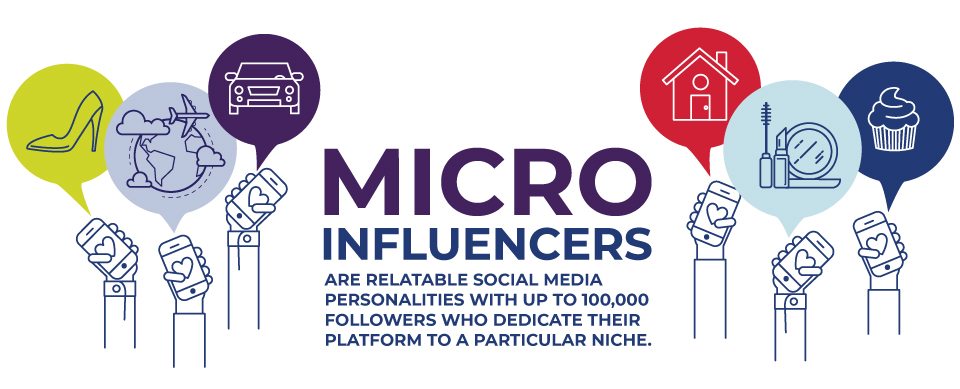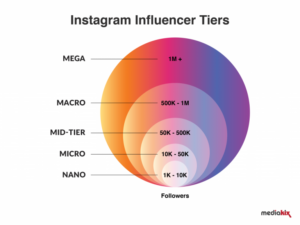

In the travel/tourism industry we REALLY love big numbers. Room-nights are in thousands, visitors are in billions and we’re now talking about tourism’s global GDP in the $TRILLIONS.
So it’s no surprise that when the topic of influencer marketing comes up, the “worth” of a travel influencer (and what determines how we treat them) is all about their number of followers – the more the better. For some travel brands, the Holy Grail is to have the likes of Kylie Jenner post an Instagram picture of their venue or product. If she posts it, they will come, goes the thinking.
But reality doesn’t work like that. Particularly in influencer marketing.
While we can all dream that one day the Khardashians or Ronaldo will show-up at our destinations, the better bet and better investment of time and money is with micro-influencers – those influencers with 10K- 50K followers.
Key Reasons to Work With Micro Influencers:
Genuine Content Commitment:
Part of the power of micro-influencers is that in order to attract and maintain a following in a complex sea of stories and story-tellers, their content (be that written or image-based) needs to project high levels of commitment and authenticity. They must be fully-vested in what they are showcasing or else followers will dump them. This is great news for travel brands and destination marketers as increasingly, research shows that visitors doubt the credibility of their content in other digital and traditional media.
Better Engagement:
While attracting a lot of followers is a function of art and science, the magic happens when those followers engage. Generally, micro-influencers have higher follower engagement rates because of their perceived authenticity and relatability. This is because influencers typically begin their existence focusing on a select geographic, demographic or behavioral niche and then inject their personalities and passions to grow follower loyalty. This loyalty gets further amplified because micro-influencers are more able to personally engage with their followers growing relationships which translate into greater loyalty and, ultimately, more followers.
More Affordable:
Micro-influencers are also more affordable because the market prices influencers (rightly or wrongly) primarily by follower numbers. This allows brands and destinations of any size to work with them at a relatively low price point and corresponding low risk paradigm. And for brands and destinations looking to explore influencer marketing, this is an ideal starting point.
Niche Targeting:
While macro-influencers provide greater reach and coverage (and the ability for the brand/destination to share big numbers when reporting campaign results), micro-influencers are typically more niche-driven, allowing brands/destinations to more precisely target audiences that align well with their experience. This works really well for local events that have unique but loyal followings that will travel to your destination or venue.
Things to Keep In Mind When Working With Micro-Influencers:
Its not all green grass and high tides in the world of micro-influencers. You need to approach any new marketing undertaking with eyes wide open but even more so with influencer marketing as the space is still very fluid and evolving on an almost daily basis. Here’s a few things to keep in mind:
Smaller “Vanity Metrics”
Be prepared for the fact that you won’t see big numbers around reach, click-throughs and elevated brand awareness. Micro-influencers don’t “break the internet” or flood your website with new traffic and orders. What they do provide is an affordable pathway to targeted audience engagement for your brand. If you do it right, you won’t need the macro-influencers anyways.
Increased Operational Management
Working with micro-influencers means you need to precisely understand your business need/opportunity/audience. You’ll then need to be prepared to source qualified micro-influencers that align with your target audiences, collaborate with each of them around an action plan with defined timing and objectives, monitor and report results. It can be a lot of work, particularly when working with an influencer for the first time and if you’re working with multiple influencers.
This reality has led to an explosion in influencer marketing agencies. They take care of all of the planning and operationalization which can be real value for smaller brands/destinations. They also charge a hefty fee which can kill the affordability quotient.
Fake Followers
Influencer marketing is still somewhat of a “wild west” endeavor. This means that there are few operating standards and no scrutiny around business ethics since most micro-influencers are small business owners. It should come as no surprise that some micro-influencers buy fake followers and engagement, falsely inflating their engagement metrics and value. This is truly a “buyer beware” situation that can only be addressed through due diligence.
Inconsistent Back Office Decorum
While its important to keep in mind that influencers are a business, their back office procedures (e.g. contracts, analytics, reporting) may be under-evolved…which could create considerable frustration for brands/destinations with explicit purchasing standards. Patience should be the order of the day. Remember, you’re retaining a marketing services professional, not an accountant.
Get connected to influencer marketing ideas and opportunities at Texas TravelIdeaFest
: Influencer marketing • micro-influencers
What are People Saying: